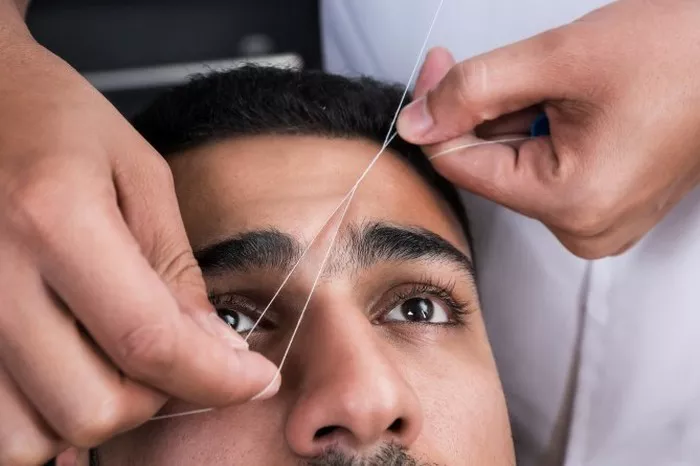As we age, the effects of gravity and loss of skin elasticity become more apparent on our face. These changes can lead to sagging skin, wrinkles, and a loss of facial volume. Traditionally, facelift surgery has been the go-to solution for rejuvenating the face, but not everyone is ready for or interested in undergoing a surgical procedure. Enter the thread lift—a minimally invasive alternative that offers impressive results with minimal downtime. In this article, we will explore how thread lift is done, its benefits, and what to expect during and after the procedure.
What is a Thread Lift?
A thread lift, also known as a suture lift or a non-surgical facelift, is a cosmetic procedure designed to lift and tighten sagging skin on the face and neck. Instead of removing excess skin like in a traditional facelift, a thread lift uses dissolvable sutures with bi-directional cones or barbs to lift and reposition the skin. These threads are made from materials such as polydioxanone (PDO) or polylactic acid (PLA), which stimulate collagen production and gradually dissolve over time.
The Procedure: Step-by-Step
While the specifics of a thread lift procedure may vary depending on individual needs and goals, the general steps typically involve the following:
Consultation
The first step is to schedule a consultation with a qualified cosmetic surgeon or dermatologist who specializes in thread lifts. During this consultation, you will discuss your concerns, goals, and medical history. The practitioner will assess your eligibility for the procedure and develop a personalized treatment plan.
Preparation
On the day of the procedure, the treatment area will be cleansed, and a local anesthetic will be administered to ensure your comfort throughout the process. Thread lifts are usually performed on an outpatient basis, meaning you can go home the same day.
Marking and Incision
The practitioner will mark the areas where the threads will be inserted. These marks serve as a guide during the procedure. Small incisions are made in inconspicuous locations to allow access for the insertion of the threads.
Thread Insertion
Using a thin needle or cannula, the threads are carefully inserted into the predetermined areas beneath the skin. The number and placement of the threads depend on the desired lifting effect and the individual’s unique facial anatomy.
Lifting and Anchoring
Once the threads are in place, they are gently lifted to reposition and tighten the skin. The barbs or cones on the threads anchor them to the underlying tissue, holding the lifted position securely.
Trimming and Knotting
Excess thread length is trimmed, and any remaining loose ends are knotted to ensure that the threads stay in place. The knots are typically positioned within the subcutaneous tissue and are not visible or palpable.
Recovery and Aftercare
After the procedure, you may experience mild swelling, bruising, and discomfort, which are generally temporary and resolve within a few days. Your practitioner may provide specific aftercare instructions, such as avoiding strenuous activities, sleeping on your back, and applying cold compresses to minimize swelling.
Benefits of Thread Lifts
Thread lifts offer several advantages over traditional facelift surgery and other non-surgical treatments. Here are some of the key benefits:
Minimally Invasive: Unlike facelift surgery, thread lifts involve minimal incisions and do not require general anesthesia. This reduces the risk of complications and shortens the recovery time.
Natural-Looking Results: Thread lifts provide natural-looking results by lifting and repositioning the skin without creating a pulled or artificial appearance.
Collagen Stimulation: The threads used in a thread lift stimulate collagen production, which helps improve skin elasticity and further enhances the results over time.
Customizable: Thread lift procedures can be tailored to address specific areas of concern, such as jowls, nasolabial folds, or sagging eyebrows. The treatment plan can be adjusted to meet individual needs.
Quick Procedure and Recovery: A thread lift typically takes less than an hour to perform, and most patients can resume their normal activities within a few days. This makes it a convenient option for those with busy schedules.
Who is a Good Candidate for a Thread Lift?
Thread lifts are suitable for men and women who have mild to moderate facial sagging and want to achieve noticeable lifting and tightening effects without undergoing surgery. Ideal candidates for thread lifts are generally in good overall health, have realistic expectations, and understand the limitations of the procedure. It is important to consult with a qualified practitioner to determine if you are a suitable candidate.
Conclusion
A thread lift is a non-surgical facelift option that offers impressive results with minimal downtime and risks. The procedure involves the insertion of dissolvable sutures with barbs or cones beneath the skin to lift and reposition sagging facial tissues. With its customizable nature, quick procedure time, and natural-looking results, thread lifts have gained popularity as a minimally invasive alternative to traditional facelift surgery.
It’s important to note that while thread lifts can provide significant improvements, they are best suited for individuals with mild to moderate signs of aging. Those with more pronounced sagging may benefit from combining a thread lift with other cosmetic procedures for optimal results. Consulting with a qualified practitioner will help determine the most suitable treatment plan based on individual needs and goals.


